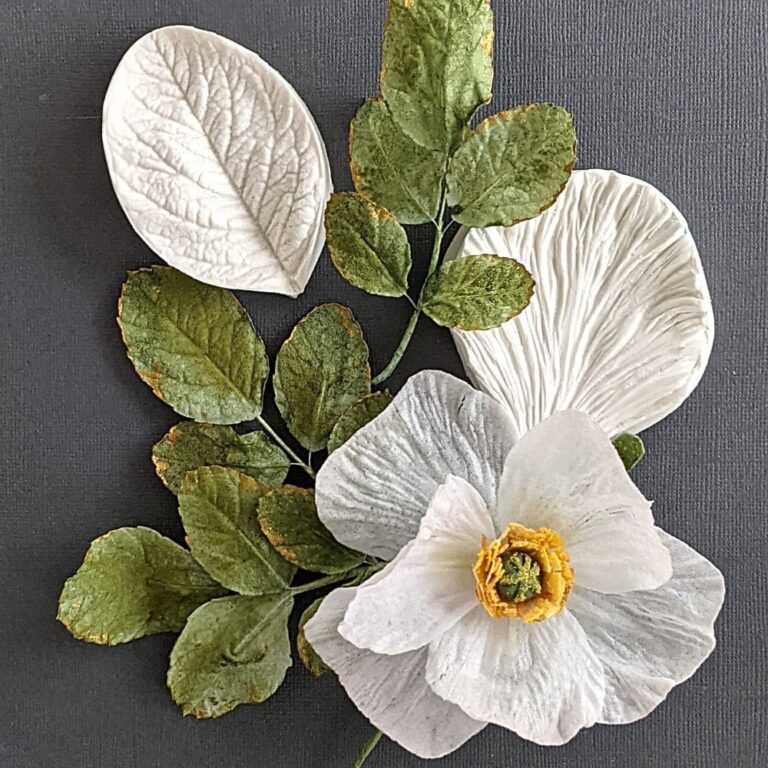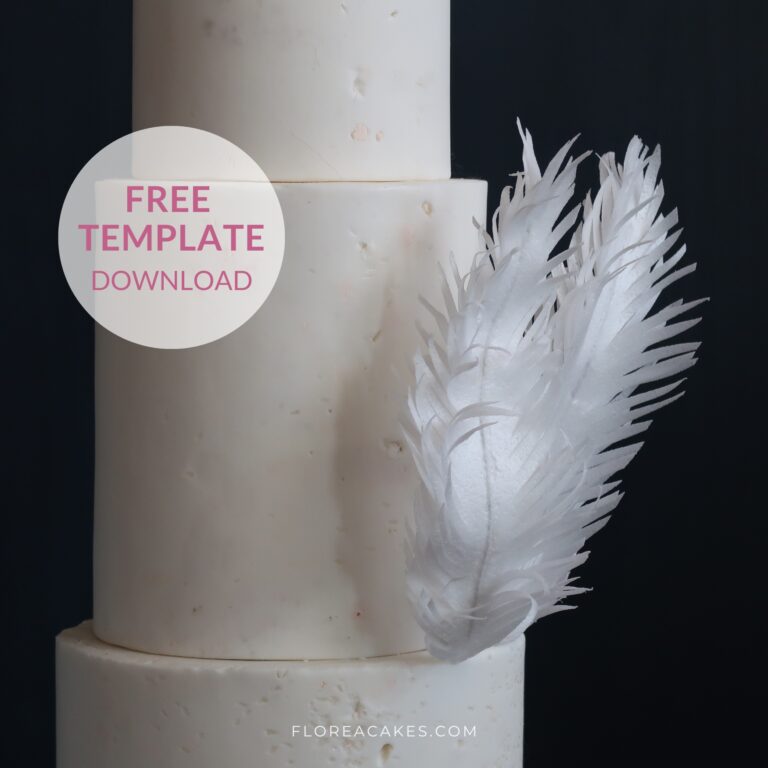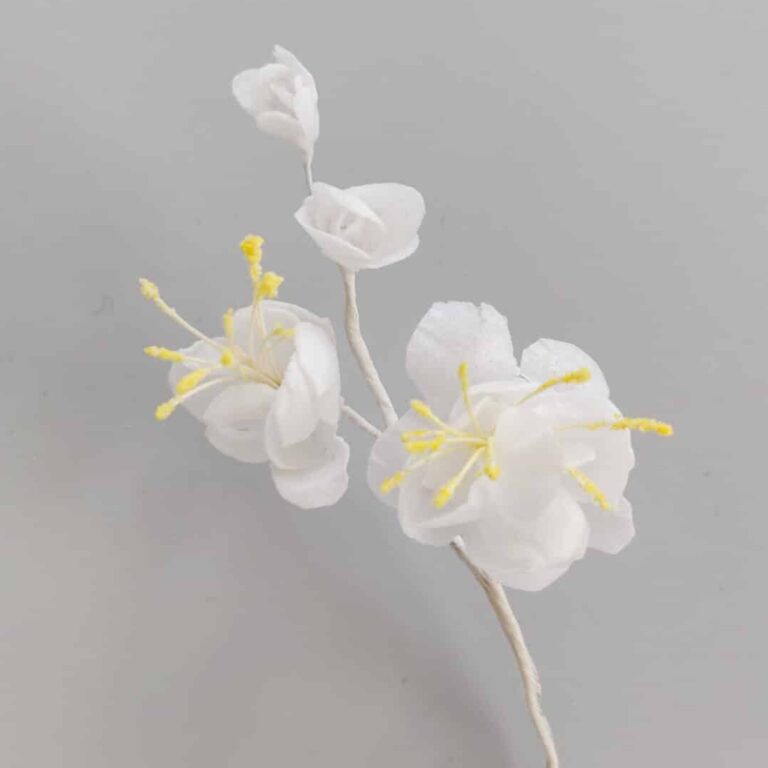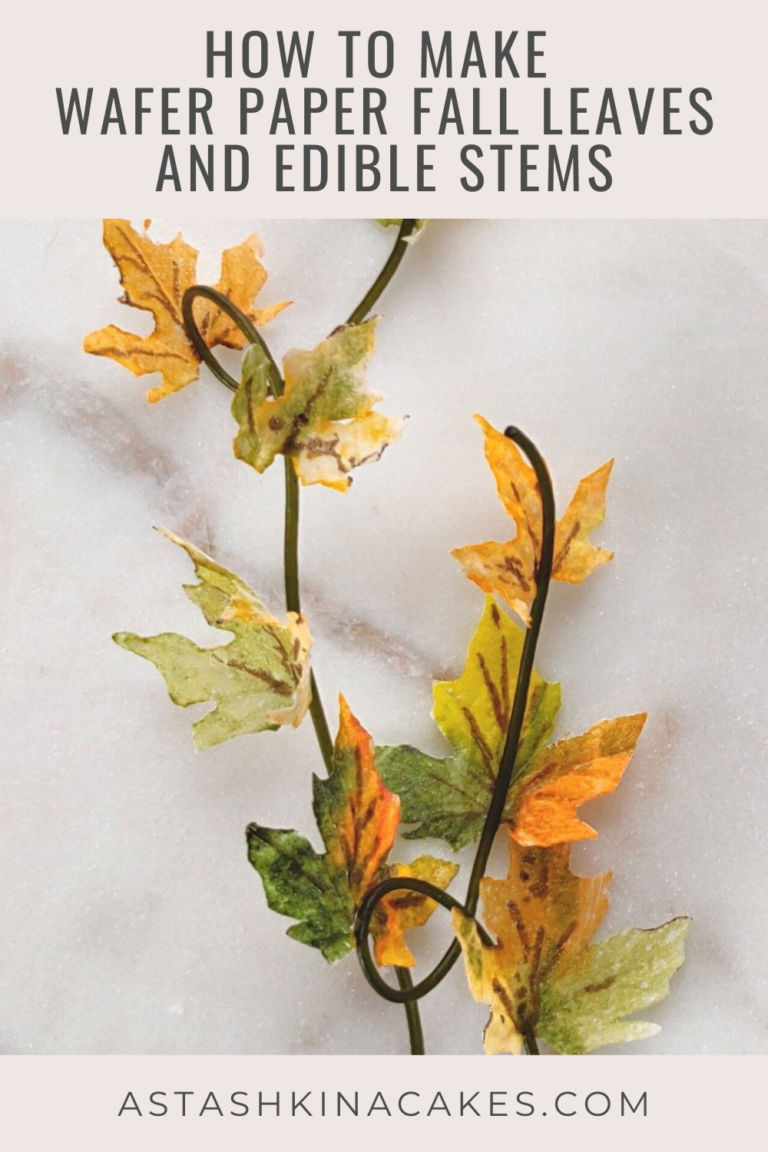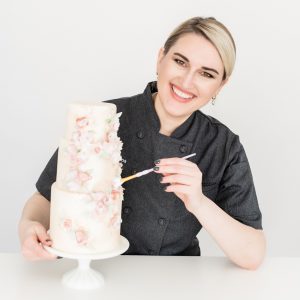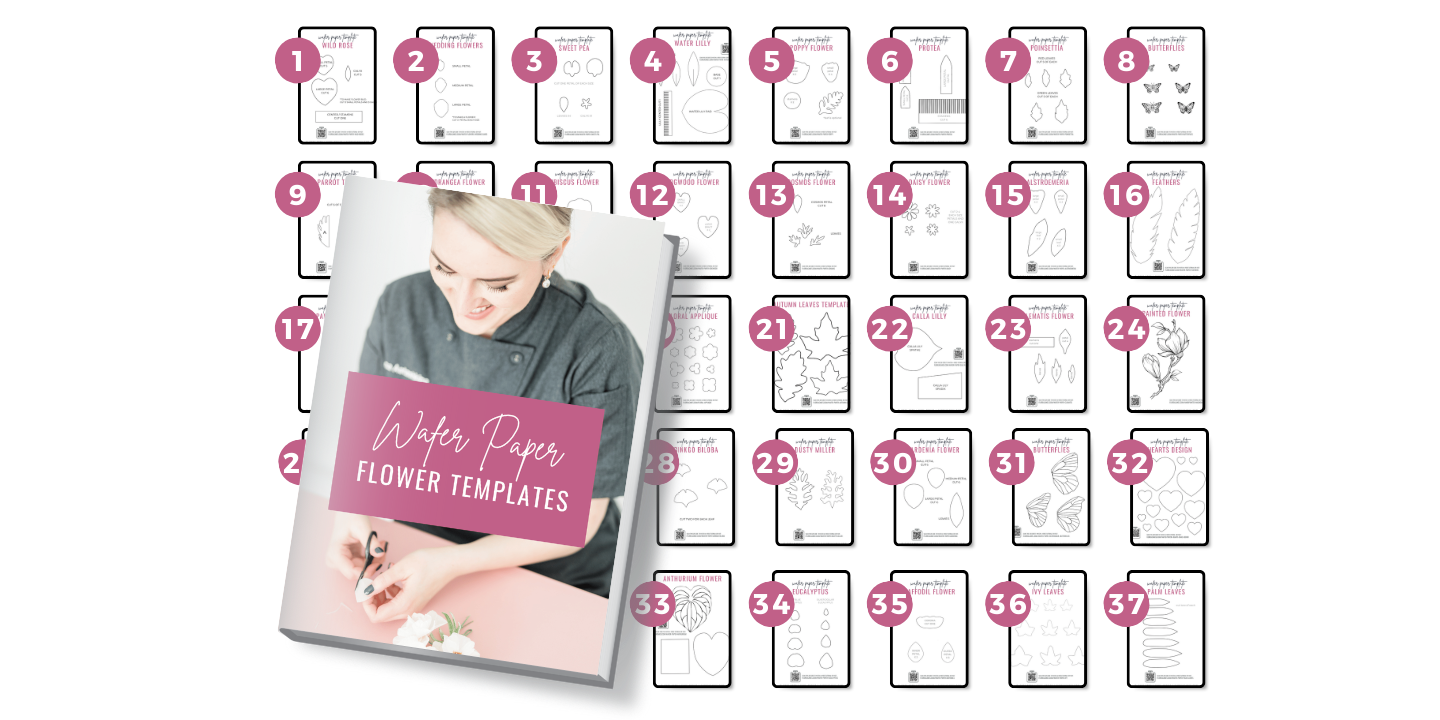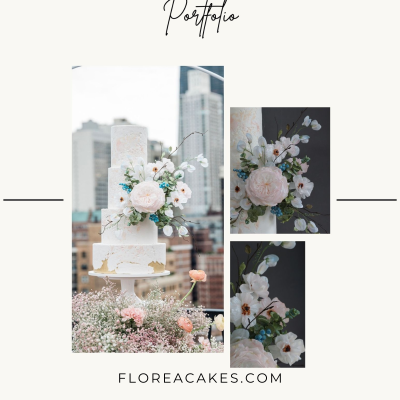
What Is a Wedding Cake Portfolio - and Why Do You Need One?
A wedding cake portfolio is more than just a collection of photos – it’s your key to standing out in a competitive market that never stops evolving. With more cake designers than ever before and economic uncertainty affecting clients’ spending choices, having a polished, professional portfolio helps potential clients quickly see your style and value.
In today’s economy, clients look for both quality and reliability, so a portfolio is tangible proof of your professionalism. By clearly showing clients how you work and what to expect, a strong portfolio helps convert leads into bookings and ensures your business prospers. Even in challenging times.
What to Include in Your Wedding Cake Portfolio
Create a printed portfolio (mine looks just like a magazine) with:
Business Info
Include a short introduction about yourself and your business. Use a photo of you with one of your cakes to personalize the experience. Add your contact details, website, and social media handles so potential clients can easily find you again after the tasting.
High-Quality Cake Photos
Feature a mix of your favorite cake designs, including close-ups and full shots. Show different styles to highlight your versatility – this is your chance to help clients fall in love with your work. Styled shoot photos and real wedding cakes both work beautifully here.
A Clear Pricing Guide
Give clients a breakdown of your pricing structure so they understand what to expect. This helps filter inquiries and builds trust.
This is my pricing approach, based on years of working with wedding clients and learning what works best for my business. Instead of charging by the hour, I price cakes based on design complexity and the number of servings.
My pricing tiers include:
- Classic – simple textures, minimal decorations
- Gold – more detail and one signature wafer paper flower
- Luxury – elaborate textures and a full arrangement of wafer paper flowers
Using clear design tiers makes it easier for clients to understand the value of each option and saves a lot of back-and-forth in the booking process.
Want to dive deeper into how to price your cakes sustainably and confidently? Check out my How To Price Wedding Cakes For Profit guide.
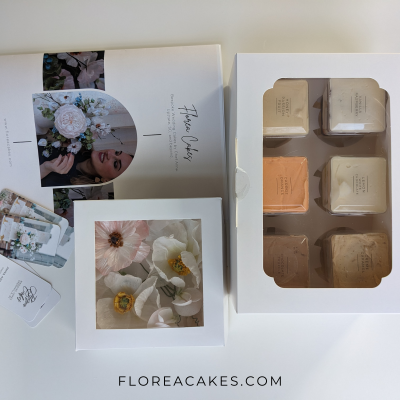
Your Ordering Process, Flavour Menu, and Customization Options
Help clients feel confident by walking them through exactly how to order a cake from you. Include an overview of your full flavour menu. In my case, I offer 12 complete flavors. During tastings, clients can choose 6 flavors to try, and then select 2–3 final flavors for their actual cake, depending on the size of the event.
Explain how you handle customization, too. I customize each cake based on the couple’s preferences, event theme, or inspiration photos.
Need help prepping your own tasting kits? Check out How To Prepare A Wedding Cake Tasting As A Home Baker – it covers exactly what to include and how to make the experience feel professional and memorable.
Serving Sizes
Include a clear guide to help clients estimate how much cake they’ll need based on their guest count. This is a crucial part of your portfolio because it reduces unnecessary back-and-forth questions and shows you know what you are doing.
Client Testimonials or Reviews
Including a few short, sincere testimonials from happy couples can make a huge difference. Testimonials and reviews act as social proof, showing potential clients that others have trusted you and loved the experience and results you delivered.
How to Take Photos That Wow
Lighting Tips for Home Bakers
Natural light is your best friend when photographing cakes at home. Position your cake near a window with plenty of soft, indirect daylight (avoid harsh sunlight that creates strong shadows or blown-out highlights). Overcast days are perfect for even, flattering light.
To enhance this natural light and create a truly professional look, consider these simple additions:
- A diffuser to soften and spread the light. Placed between a light source (like a window) and your cake, it reduces harsh shadows and creates more even lighting. This helps bring out details without overexposing them. You can use a thin white sheet or parchment paper as a simple diffuser.
- Reflectors are perfect when one side of your cake is shadowed from your main light source (like a window). Position it opposite the window to bounce light back onto the shadowed side, filling in those dark areas and ensuring your cake is evenly lit from all sides. You can make a DIY reflector from white foam board, white cardstock, or even a white poster board opposite the window. This bounces light back onto the shadowed side, filling in those dark areas and ensuring your cake is evenly lit from all sides.
If natural light is limited, consider using a simple ring light or softbox to mimic daylight without overpowering your setup. Just like the window light, you want to ensure this artificial light is diffused for softness.
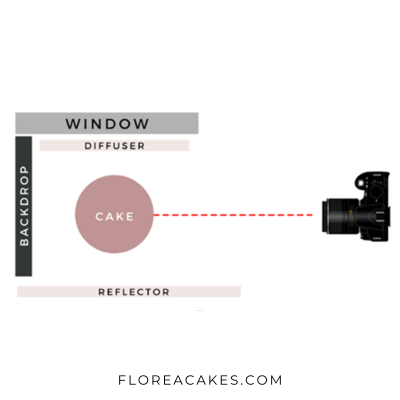
Backgrounds, Props, and Styling Ideas
Keep your background simple and clean to ensure the focus stays on your cake. Neutral colors like gray, white, or soft pastels work well without distracting from your design. Dark or black backgrounds can also be powerful, creating a striking contrast that makes lighter-colored cakes pop
Use minimal props, like a cake stand, fresh flowers, or elegant utensils, to add context and style without clutter. Remember, less is more. The cake should be the star of the shot.
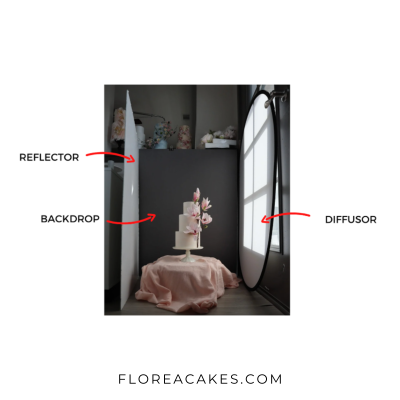
Camera Setup and Shooting Techniques
Using a remote control connected to your phone lets you snap photos without touching the device, preventing camera shake and blurry shots. This is perfect for home bakers shooting solo.
When setting up your camera, avoid top-down angles that can flatten your cake and make it look less professional. Instead, hold your camera parallel to the cake at its level to capture its layers and intricate details. Take multiple shots from slightly different angles and distances to find the most flattering perspectives.
Editing Tips to Keep It Natural
A little editing can enhance your cake photos without making them look overdone. Focus on adjusting brightness, contrast, and sharpness to bring out details. Keep colors true to life and avoid heavy filters that distort the cake’s appearance. Cropping and straightening the image can improve composition, but keep edits subtle.
Where to Showcase Your Cake Portfolio
Your Website
Your website can be the central hub for your business and the best place to showcase your portfolio. It allows potential clients to browse your work anytime and from anywhere. A well-organized website builds credibility, helps visitors get a clear sense of your style, and encourages them to reach out when they’re ready to book.
Social Media
Platforms like Instagram and Pinterest are goldmines for visual businesses like cake design. Sharing high-quality images of your cakes (and helpful content in general) helps you attract a wider audience, engage with followers, and get discovered by potential clients through hashtags, shares, and saves.
While having a strong social media presence isn’t necessary, it can help boost your visibility and connect you with more potential customers.
Printed Lookbooks or PDFs
Having a printed portfolio or a downloadable PDF during consultations or meetings adds a professional and personal touch. Physical lookbooks give clients something tangible to flip through, which can make your designs more memorable and help them visualize what they want.
PDFs are great for sending after meetings as a follow-up and allow clients to review your offerings at their own pace.
Common Mistakes to Avoid When Creating Your Portfolio
Using Too Many Styles With No Cohesive Theme
- Avoid mixing wildly different styles that confuse clients
- Maintain a consistent aesthetic that reflects your brand and expertise
- Consistency helps clients recognize and trust your work instantly
Posting Only Trendy Designs Without Showing Range
- Trends are great, but don’t rely on them exclusively
- Within your cohesive style, showcase a variety of designs – classic, timeless, and trendy
- Demonstrates your versatility and ability to cater to different tastes and occasions
Forgetting to Update Regularly
- An outdated portfolio feels neglected and unprofessional
- Regularly add your latest work to showcase current skills
- If you decide to stop offering a specific style or design, remove it from your portfolio
Bonus Tips to Attract Your Ideal Clients
Curate With Intention
Your portfolio should be a reflection of your unique style and the kind of clients you want to attract. Instead of showing every cake you’ve ever made, focus on your best work that aligns with your brand.
Add Captions That Explain The Design
Including brief captions for each cake adds valuable context. Share the inspiration behind the design, any special techniques you used, or unique features that make the cake stand out.
Use Your Portfolio To Set Expectations
A well-crafted portfolio does more than just showcase your work, it sets clear expectations for your clients. Being transparent about your pricing tiers, ordering process, and customization options can save you a lot of time explaining and make the whole process a lot smoother and stress-free for both you and the couple.
Make Your Wedding Cake Portfolio Work for You
Creating a stunning wedding cake portfolio is one of the smartest investments you can make in your cake business. Remember to keep it fresh, focused, and intentional. Show your best work, set clear expectations, and guide clients through your process.
If you’re ready to take your portfolio to the next level (and build a system that helps you book your dream wedding clients with confidence) check out my Cake Business Blueprint.
Inside, you’ll get a professionally designed Cake Portfolio Template, step-by-step guides, contract forms, and bonus tools that help you create a polished, irresistible portfolio and streamline your wedding cake business.
With the right tools and insights, you’ll be on your way to growing a successful, high-end wedding cake business that truly reflects your creativity and passion.
